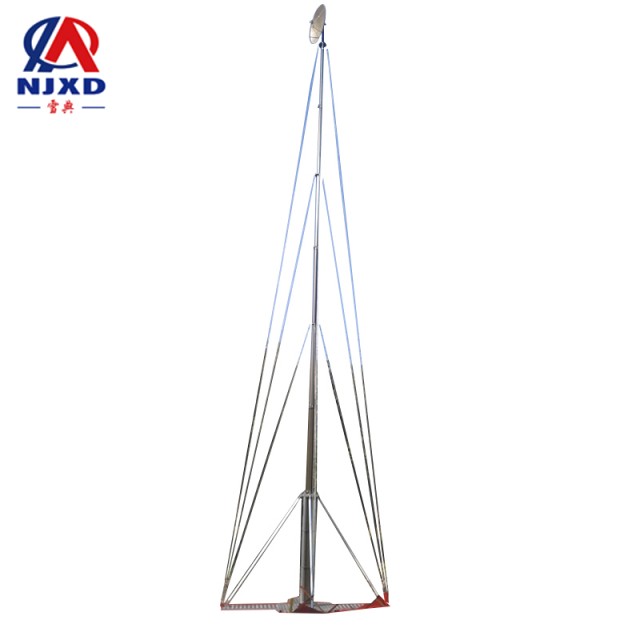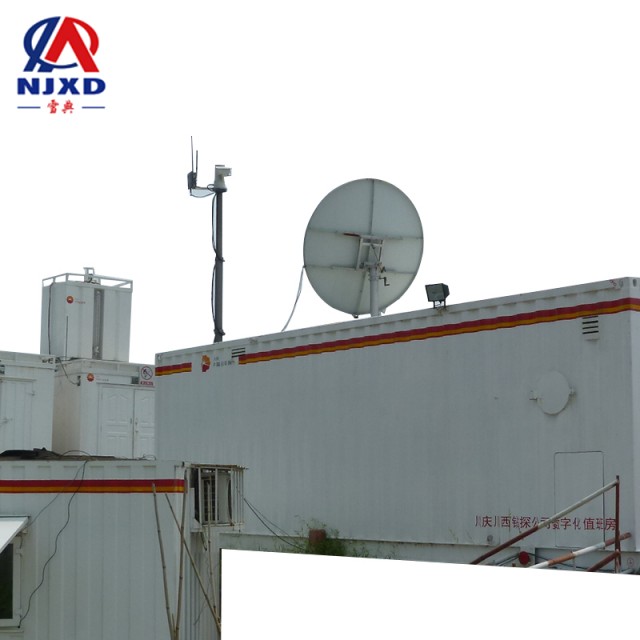NEWS
Antenna jacking system microwave station communication equipment
Time:2021-06-28 View:

microwave station (terrestrial microwave relay station) is the terminal station or relay station in the ground microwave relay system.
Introduction
Microwave station is the terminal station or relay station in the ground microwave relay system. The availability and transmission quality of microwave relay circuit have a great relationship with the design of microwave station. Different types of microwave stations should pay attention to different problems. Microwave stations can be divided into terminal stations and relay stations, and relay stations can be subdivided into branch stations and relay stations.
Terminal Station
The station at both ends of the link or the branch terminal when there is a branch line. The signal is demodulated into a baseband signal and sent to the baseband terminal equipment (or vice versa). Terminal stations generally have only one communication direction for each link, and large cities may have links in several directions. The terminal station controls links in all directions.
Branch Station
The branch station (or called the main station) has a relay station with landing calls and transfer calls. In addition to some characteristics of terminal stations, it has more than two communication directions for microwave links. The branch station can play an auxiliary control role on the link.
Relay Station
Relay stations are stations that only serve as relays. It sometimes plays an important role in sorting out the digital code stream in the digital link, which is called regenerative relay station, but it has no function of up and down channels. In the microwave link of transmitting broadcast television, the relay station can distribute video signals for local television stations to use. In a link, the relay station generally has only two communication directions. In most cases, the number of relay stations is greater than that of other types of stations. Therefore, reducing the maintenance amount of relay stations is an important problem.

Requirements for each subsystem in microwave station
The requirements for each subsystem in the microwave station are considered separately according to the functions of each subsystem:
① main communication system: when there are more than two channels in the receiving and transmitting wireless equipment of the microwave station, it is better to arrange them in one column. Only in this way can the waveguide shunt system of feeder be easily arranged. For example, if a link has 8 channels and 4 channels share a feeder (where singular and quantity channels are transmitted by different polarization, so two feeder channels are used for 8 channels), A shunt system is required to send signals from four different channels (or four frequencies) to each wireless receiver respectively (the transmitter is reverse transmission with the same structure). This shunt system is the simplest and most widely used. Because each radio wave passes through a circulator and the stop band reflection of the bandpass filter, the signal loss and the non-uniformity of group delay will increase. In order to make the quality of each wave channel basically equivalent, the rack arrangement of adjacent stations can only make the Circulator passing through each wave channel and the number of filters the same by adopting the opposite arrangement order. If the front Station is arranged by 1,3,5 and 7 channels from the entrance end of feeder, the rear station is arranged by 7,5,3 and 1 channels. 2,4,6,8 channels and so on.
When the terminal equipment is far away from the microwave equipment, the baseband signal needs to be transmitted by a long cable. In addition to maintaining the necessary return loss (or matching situation), the protective grounding of the system is very important. Because the frequency spectrum of the baseband signal mostly coincides with the broadcast segment, broadcast crosstalk will occur when the transmission cable is not well sealed or grounded.
② power supply system in order to obtain higher link availability, microwave station equipment uses DC power supply. According to the power consumption, the primary power supply can use AC mains, solar cells and wind power to generate electricity, and according to the reliability of various equipment, appropriate range hood generator is used as backup. Generally, the basic power supply requires unattended operation. In order to avoid electric corrosion caused by different metals, the DC power supply system is mostly grounded to the positive electrode. If the AC power supply system of microwave station is mains power, three-phase five little system is mostly used for the load from substation to data center. That is, the middle line of the three-phase power supply is separated from the ground line to avoid interference caused by excessive 50Hz ripple caused by the three-phase unbalanced current flowing through the ground line, in which the line is not allowed to be grounded in the data center.
③ grounding in microwave station because it is difficult to separate lightning protection grounding from protection grounding or DC power supply grounding, combined grounding is often adopted. In addition, to avoid stray current interference in the data center, a little grounding is also used, as shown in the figure. Therefore, in addition to grounding at the power input of the rack, the conductor led by the DC power supply is also grounded at touchdown.
④ the antenna or Tower of lightning protection microwave station is easy to be struck by lightning. Because there is no inter-station wire connection, it is generally easier to handle. Only after lightning protection measures (such as ightning rod) are taken, the ground potential equilibrium method of the whole station should be adopted to eliminate the harm caused by the ground potential difference during lightning strike. As shown in Figure 1, ground screen is a measure of ground potential equilibrium. When lightning current flows underground, ground screen the potentials of each point are equal, so the step voltage or potential difference between devices will not be formed, at the same time, the requirements for ground screen grounding resistance are not very strict.
When power line or telephone line is introduced from a distance in the microwave station, these leads may be directly exposed to Lightning; It is also possible to introduce electromagnetic induction when the Earth is exposed to lightning and cause lightning damage. In addition to lightning protection measures, these leads should also have lightning protection measures when connecting with the equipment in the station. If voltage dependent resistor or lightning arrester is used.
⑤ day feeder antenna plays the role of receiving the diffusion wave in the air into the traveling wave in the feeder or transforming the traveling wave in the feeder into the emission of the diffusion wave to the air, feeder is the transmission medium between antenna and wireless device. The number varies depending on the link capacity or spatial diversity reception. A small-capacity circuit can be used duplexer with an antenna for both receiving and transmitting. When the capacity is large, orthogonal polarization technology can be used to isolate the receiving and sending signals of an antenna and transmit them separately with two feeder. No matter how large the capacity is, two antennas can be used. Each antenna is dual polarized and four feeder antennas are used. However, some spectral overlap between adjacent channels should be paid attention to when combining. The decoupling between the channels can be enhanced by co-generating and co-receiving polarization decoupling. At this time, the polarization decoupling on a pair of antennas is easier to adjust to the optimal value. Therefore, when two antennas are required to be in the same direction, it is better for all the transmitting channels to share a pair of antennas. Single and double bellow channels are separated by polarization, and the receiving antennas are processed in the same way.
⑥ Iron Tower: There are two types of iron tower: self-standing and cable type. When the building area is small, the self-supporting tower is used. However, when there are abundant construction sites, the cable tower with low cost can be used. And the spatial diversity antenna is also easier to be arranged on the same vertical plane. In order to avoid easy twisting of the cable tower body, it can be overcome by lengthening the cable arm.
Cement towers can also be used in coastal areas or areas with suitable conditions. Although the cost is slightly higher, the maintenance cost is lower than that of metal towers and the service life is longer in strong typhoon areas or areas with severe sea breeze corrosion.

CATEGORY
NEWS
- Digital microwave relay communication system for lifting communication equipment
- Antenna jacking system microwave station communication equipment
- Base station emergency communication radio navigation system
- Working Principle of radio navigation system base station lifting antenna
- Application and analysis of lifting monitoring in digital oilfield